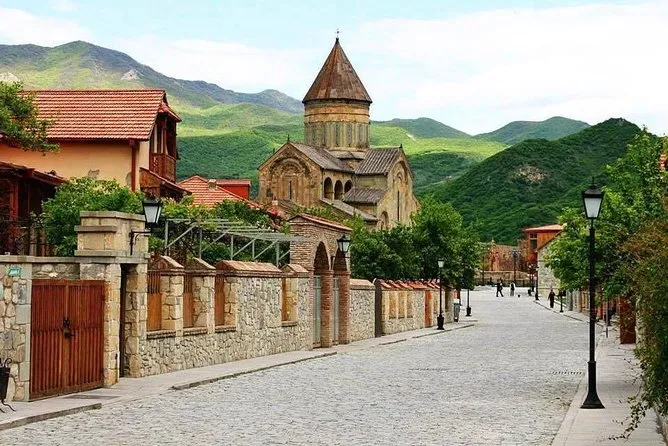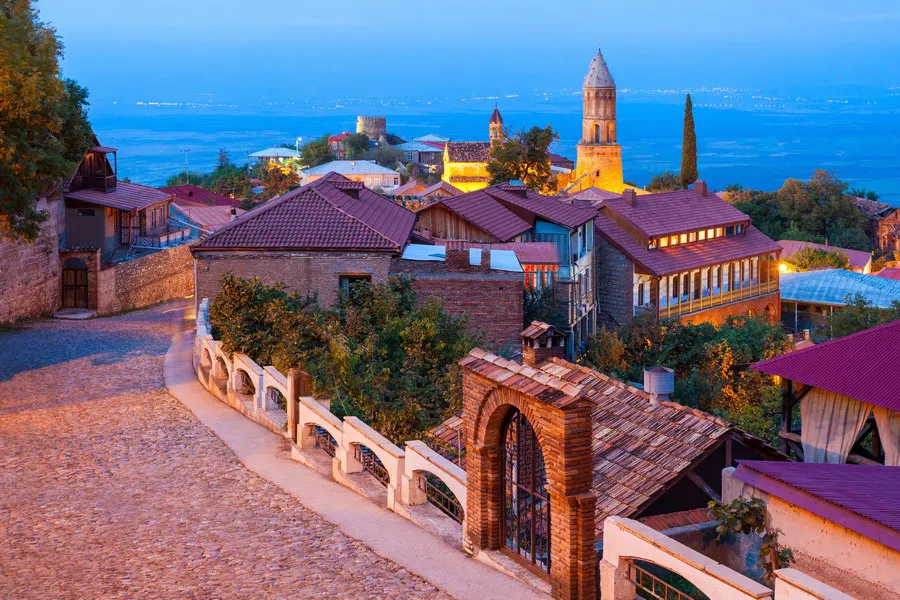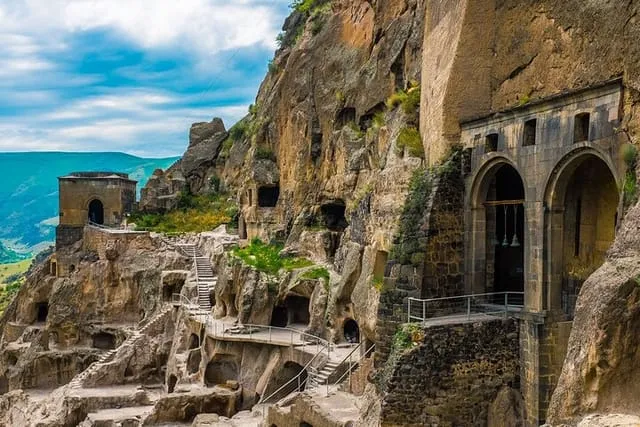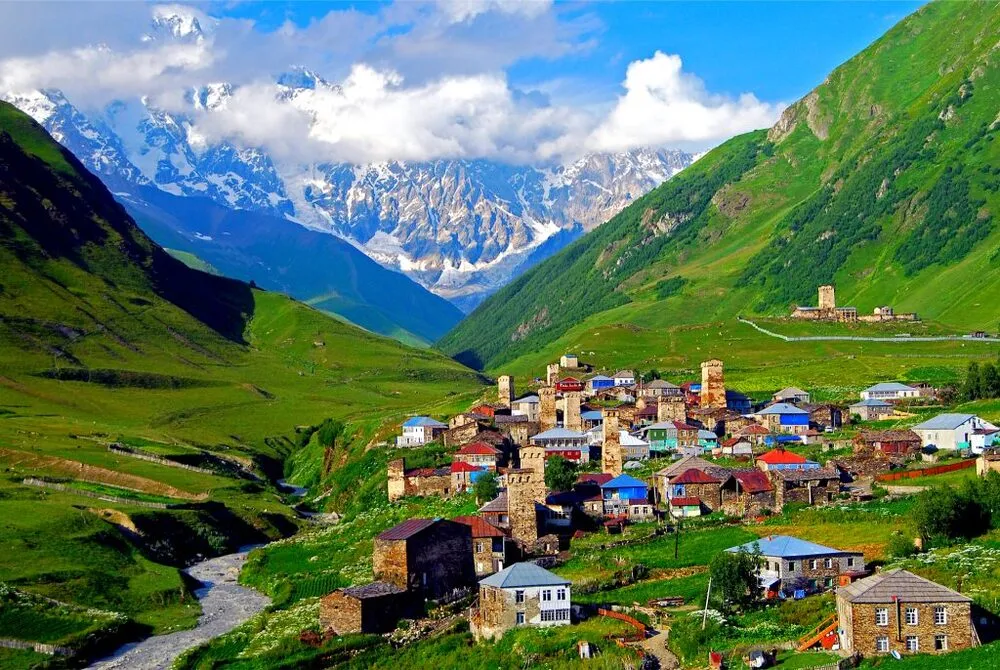Georgia, nestled at the crossroads of Europe and Asia, is renowned not only for its majestic natural landscapes but also as a treasure trove of unique historical architecture. These ancient architectural marvels stand as testaments to a glorious past, narrating compelling stories of culture, religion, and distinctive art that captivate visitors from across the globe.
From the imposing stone churches perched atop mountains and the stoic ancient fortresses along the Black Sea coast to the enigmatic cave monasteries and moss-covered ancient cities, each architectural structure in Georgia carries its own historical imprint. They reflect the cultural fusion of East and West and the essence of architectural brilliance spanning centuries. A journey through Georgia is a voyage back in time, offering a chance to admire unique architectural masterpieces and deeply appreciate the diverse cultural beauty of this captivating nation.
Exploring Georgia’s Masterpieces of Historical Architecture
Tbilisi Capital – Where East Meets West in Architecture

Tbilisi, the vibrant capital of Georgia, is a melting pot of unique architectural essence, reflecting the city’s diverse history and strategic geographical position. Situated along the gentle Kura River, Tbilisi harmoniously blends ancient Eastern architecture with Western modernity, creating a captivating urban landscape.
Narikala Fortress: No exploration of Tbilisi is complete without mentioning Narikala Fortress, a historical symbol of the city. Originally built in the 4th century and expanded over centuries, Narikala stands as a witness to Tbilisi’s historical ups and downs. From the fortress, visitors can admire panoramic views of the city sprawling below, with its layered houses, ancient churches, and the meandering Kura River.
Abanotubani Old Town: Nestled at the foot of Narikala Fortress is the Abanotubani Old Town, famous for its natural hot spring bathhouses utilizing sulfurous waters. The district’s distinctive architecture features red brick domes in a semi-circular shape, creating a unique architectural space with a strong Persian influence. The bathhouses in Abanotubani are not just places for relaxation but also a significant part of Tbilisi’s culture and history.
Sameba Cathedral (Holy Trinity Cathedral of Tbilisi): Venturing into history, visitors must see the Sameba Cathedral, a magnificent religious structure symbolizing Georgia’s resurgence after the Soviet era. Completed in 2004, Sameba Cathedral is one of the largest Orthodox cathedrals in the world, featuring classic Byzantine architecture combined with traditional Georgian elements. The golden dome of Sameba Cathedral gleams against the blue sky, creating an impressive architectural highlight for Tbilisi.
Peace Bridge: To experience the intersection of past and present, visit the Peace Bridge, a modern architectural marvel standing out against the backdrop of the old town. This glass and steel bridge is not only a transportation structure but also a contemporary artwork, symbolizing Georgia’s aspiration for peace and development.
Mtskheta – Ancient Capital and UNESCO Heritage Site

Mtskheta, an ancient city located about 20km from Tbilisi, served as the capital of the Kingdom of Iberia (ancient Georgia) from the 3rd century BC to the 5th century AD. With its rich history and significant religious architectural sites, Mtskheta is recognized by UNESCO as a World Heritage Site, attracting history and architecture enthusiasts from around the world.
Svetitskhoveli Cathedral: The “heart” of Mtskheta is Svetitskhoveli Cathedral, a masterpiece of religious architecture dating back to the 11th century. Svetitskhoveli Cathedral is not only an important religious architectural work but also a national symbol of Georgia. Legend has it that the cathedral was built on the burial site of Christ’s robe, making it a sacred pilgrimage destination. The cathedral’s architecture is distinctly medieval Georgian, with yellow sandstone walls and towering domes, creating a solemn and ancient atmosphere.
Jvari Monastery: Located on a hilltop opposite Mtskheta, Jvari Monastery (Monastery of the Cross) is another religious architectural site of immense historical and architectural value. The monastery was built in the 6th century, marking Iberia’s conversion to Christianity. From Jvari Monastery, visitors can admire panoramic views of Mtskheta and the confluence of the Mtkvari and Aragvi rivers, a majestic natural setting with profound historical significance. Jvari Monastery’s architecture is a prime example of early Georgian architectural style, with simple lines harmonizing with the surrounding natural landscape.
Samtavro Monastery: Within Mtskheta lies Samtavro Monastery, a religious architectural complex including the main church, bell tower, and other auxiliary structures. Samtavro Monastery has a long history, linked to Saint Nino, who brought Christianity to Georgia in the 4th century. Samtavro Monastery’s architecture is medieval Georgian, with thick stone walls and red tile roofs, creating a peaceful and sacred space.
Sighnaghi Fortress City – Ancient Beauty and Romance

Sighnaghi, a small city in the Kakheti region of eastern Georgia, is known as the “City of Love” for its ancient, romantic beauty and stunning views of the Caucasus Mountains. Sighnaghi is famous for its sturdy city walls, winding cobblestone streets, and distinctive red coral tile roofs.
Sighnaghi Walls: The architectural highlight of Sighnaghi is the system of walls surrounding the city, built in the 18th century under King Erekle II. Sighnaghi’s walls are approximately 4km long, with 23 watchtowers and 6 city gates, creating an impressive defensive structure. Visitors can walk along the walls to admire panoramic views of the city and the vast Alazani plain in the distance. Sighnaghi’s wall architecture is in a traditional military style, with thick stone walls and towering watchtowers, reminiscent of a turbulent historical period.
Traditional Residential Architecture: Inside the city walls, Sighnaghi charms visitors with cobblestone streets and traditional wooden houses featuring intricately carved balconies. Houses in Sighnaghi are typically two stories, with stone ground floors and wooden upper floors, topped with bright red tile roofs. Sighnaghi’s residential architecture is distinctly traditional Georgian, with a harmonious blend of natural materials and refined construction techniques.
Vardzia – Magnificent Cave Monastery

Vardzia, a cave monastery located in southern Georgia, is a unique and mysterious architectural masterpiece. Built in the 12th century under Queen Tamar, Vardzia is a colossal cave city with thousands of rooms, churches, wine cellars, and tunnels, carved deep into the Erusheti mountain range.
Unique Cave Architecture: Vardzia is not just a monastery but also a fortress, a city hidden within the mountains. The Vardzia cave complex includes over 6000 rooms, spread over 13 levels, featuring a main church, monks’ residences, living rooms, kitchens, wine cellars, and a complex irrigation system. Vardzia’s architecture showcases the creativity and masterful construction techniques of medieval Georgians, utilizing the natural terrain to create a unique defensive and religious structure.
Church of the Assumption: At the heart of Vardzia is the Church of the Assumption, adorned with beautiful frescoes dating back to the 12th century. These frescoes are invaluable works of art, displaying Byzantine painting style combined with traditional Georgian elements. The Church of the Assumption is Vardzia’s most sacred space, where monks prayed and performed religious rituals.
Svaneti – Land of Ancient Stone Towers

Svaneti, a high mountain region in northwestern Georgia, is recognized by UNESCO as a World Heritage Site for its majestic natural landscapes and unique architecture. Svaneti is famous for its ancient stone towers, known as “Svan towers,” symbols of the region’s defensive architecture and traditional culture.
Svan Towers: Svan towers are unique architectural structures, built from the 9th to the 12th centuries, primarily for defense against invasions and family protection. Svan towers typically range from 20 to 25 meters in height, with 4-5 stories, built from stone and wood without mortar. Each Svan family usually owned one or more Svan towers, reflecting the wealth and power of the clan. Svan tower architecture is a testament to the unique construction techniques and martial spirit of the Svan people.
Ancient Churches and Fortresses: Besides Svan towers, Svaneti also has many other ancient churches and fortresses, built from the 10th to the 14th centuries. These architectural works are often decorated with exquisite frescoes and carvings, reflecting the development of art and religion in Svaneti during the Middle Ages. Lamaria Church in Ushguli and Nakipari Church in Mestia are typical examples of religious architecture in Svaneti.
Conclusion
The historical architectural landmarks in Georgia are not just inanimate stone structures; they are living pages of history, recounting a glorious past, a diverse culture, and a resilient people. From vibrant Tbilisi to ancient Mtskheta, romantic Sighnaghi, mysterious Vardzia, and majestic Svaneti, each location in Georgia offers unique and unforgettable architectural experiences. Visit Georgia to witness these architectural masterpieces firsthand and discover the rich cultural and historical beauty of this country at the crossroads of Europe and Asia.